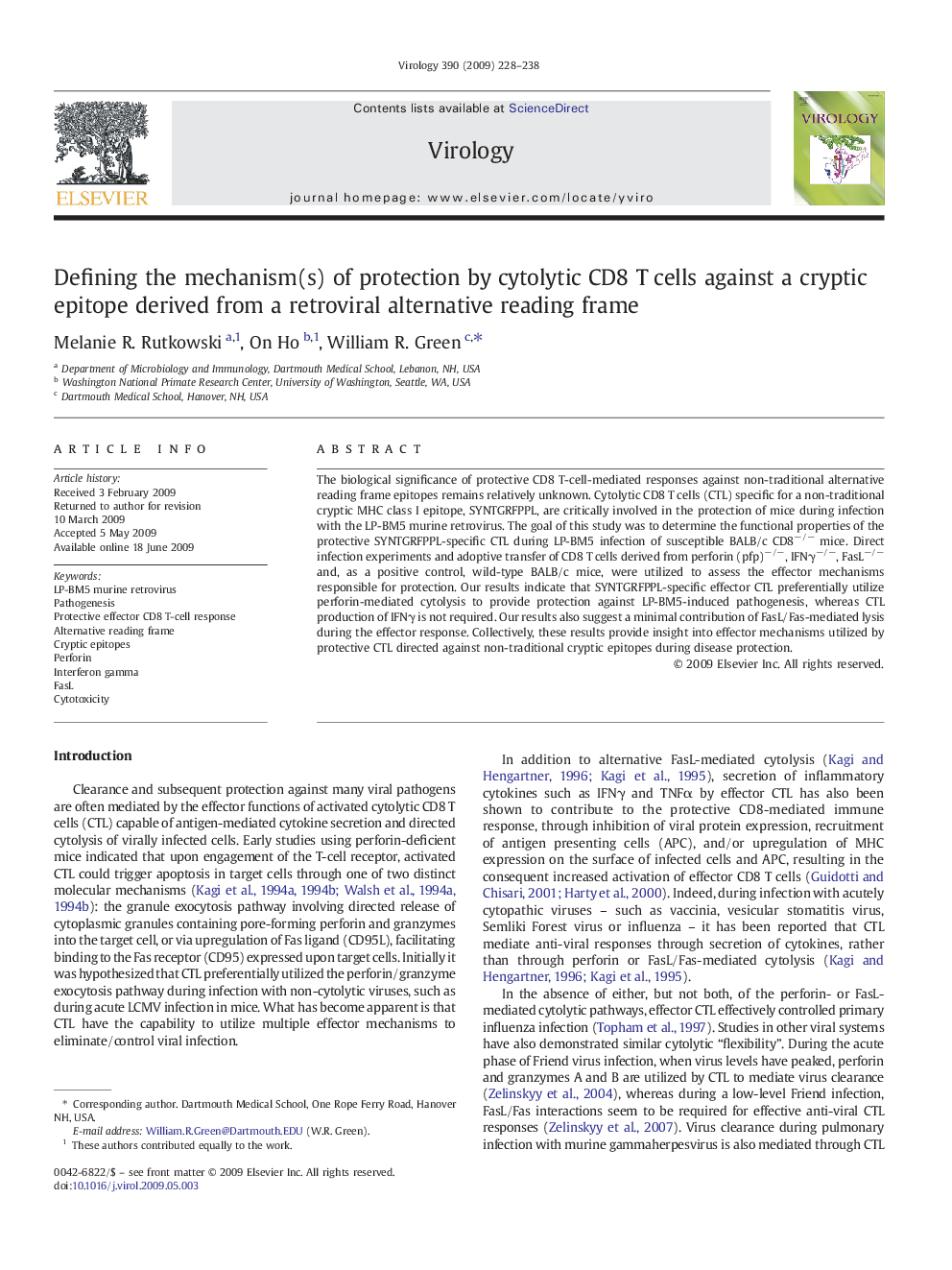| Article ID | Journal | Published Year | Pages | File Type |
|---|---|---|---|---|
| 3426181 | Virology | 2009 | 11 Pages |
The biological significance of protective CD8 T-cell-mediated responses against non-traditional alternative reading frame epitopes remains relatively unknown. Cytolytic CD8 T cells (CTL) specific for a non-traditional cryptic MHC class I epitope, SYNTGRFPPL, are critically involved in the protection of mice during infection with the LP-BM5 murine retrovirus. The goal of this study was to determine the functional properties of the protective SYNTGRFPPL-specific CTL during LP-BM5 infection of susceptible BALB/c CD8−/− mice. Direct infection experiments and adoptive transfer of CD8 T cells derived from perforin (pfp)−/−, IFNγ−/−, FasL−/− and, as a positive control, wild-type BALB/c mice, were utilized to assess the effector mechanisms responsible for protection. Our results indicate that SYNTGRFPPL-specific effector CTL preferentially utilize perforin-mediated cytolysis to provide protection against LP-BM5-induced pathogenesis, whereas CTL production of IFNγ is not required. Our results also suggest a minimal contribution of FasL/Fas-mediated lysis during the effector response. Collectively, these results provide insight into effector mechanisms utilized by protective CTL directed against non-traditional cryptic epitopes during disease protection.
